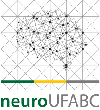Banca de QUALIFICAÇÃO: FLAVIO HERRMANN
Uma banca de QUALIFICAÇÃO de MESTRADO foi cadastrada pelo programa.DISCENTE : FLAVIO HERRMANN
DATA : 10/08/2022
HORA: 14:00
LOCAL: https://conferenciaweb.rnp.br/webconf/ruth-2
TÍTULO:
Contributions of Tai Chi Chuan in aging neuropsychiatric aspects
PÁGINAS: 38
GRANDE ÁREA: Ciências da Saúde
ÁREA: Educação Física
RESUMO:
Aging is a natural life process, continuously active and irreversible, that makes the organism more vulnerable to internal and external environment aggressions. Regular physical exercise reduces the risk of cardiovascular diseases, obesity, osteoporosis, hip fracture and frailty, and it is also a marker of an elderly person’s independence. Thus, the present study aims at analyzing if the Tai Chi Chuan practice enables reduction of symptoms of stress, anxiety and depression and also at verifying its effects to cognition and time perception to healthy elderly people. In order to do so, at the first moment, 11 elderly women aged 60 to 70 years old were selected in leisure and sports centers in the city of São Bernardo do Campo. The period of initial intervention was 4 months (two 20-minute asynchronous classes and a 60-minute synchronous one) when the individuals were evaluated before and after the intervention. Presently, a second group of 13 elderly women participates in the weekly in-person intervention (a 60-minute class) and two asynchronous 20-minute classes. The interventions are based upon the Tai Chi Pai Lin style, which is constituted by an initial period of warming up, then a QI Gong and Tau lo practice, being followed by meditation and self-massage.Every individual participates in physical and cognitive tests. The physical tests are 6’ walk, Sitting down and Standing Up and Balance. The cognitive tests are Track Test, Mini Mental State Exam and semantic verbal fluency test. At the end of the interventions, our objective is to compare the results within and between the groups. The statistical analysis was done with Jamovi 2.2.5: first, we analyzed the data distribution and then, for the variables that accepted normality, homogeneity and linearity assumptions, we applied the Student “t” test, ANOVA (or ANCOVA), the analysis of effect size (Cohen d) and Pearson Correlation. For the variables that rejected the previous assumptions, we used the “U” Mann Whitney test, Kruskal-Wallis test, the analysis of effect size (Cliff Delta) and Spearman Correlation. We admitted p≤0,05 for all analyses. The data of the first intervention pointed to a variation, within and between groups in the DASS-21 quiz, the group with the highest frequency (before = 49.5; after = 59.67) and the group with the lowest frequency (before =59.4; after= 52.8). However, there was no significant p (p = 0.974; effect size = 0.0167). In the analysis of correlation we have observed a moderate correlation between BAF and MEEM and between DASS-21 and PSQI. Having said so, the preliminary data suggests variation in anxiety, stress and depression levels in the highest frequency group; however, it is not possible to affirm whether it is a result of Tai Chi practice or not.
MEMBROS DA BANCA:
Presidente - Interno ao Programa - 1653406 - ABRAHAO FONTES BAPTISTA
Membro Titular - Examinador(a) Externo ao Programa - 8327886 - PEDRO PAULO ARAUJO MANESCHY
Membro Titular - Examinador(a) Externo à Instituição - SEBASTIÃO GOBBI - UNESP
Membro Suplente - Examinador(a) Interno ao Programa - 1887027 - FERNANDO AUGUSTO DE OLIVEIRA RIBEIRO
Membro Suplente - Examinador(a) Interno ao Programa - 1640243 - ALEXANDRE HIDEKI OKANO
Membro Suplente - Examinador(a) Externo à Instituição - DANILO TAKASHI AOIKE - UNIFESP




